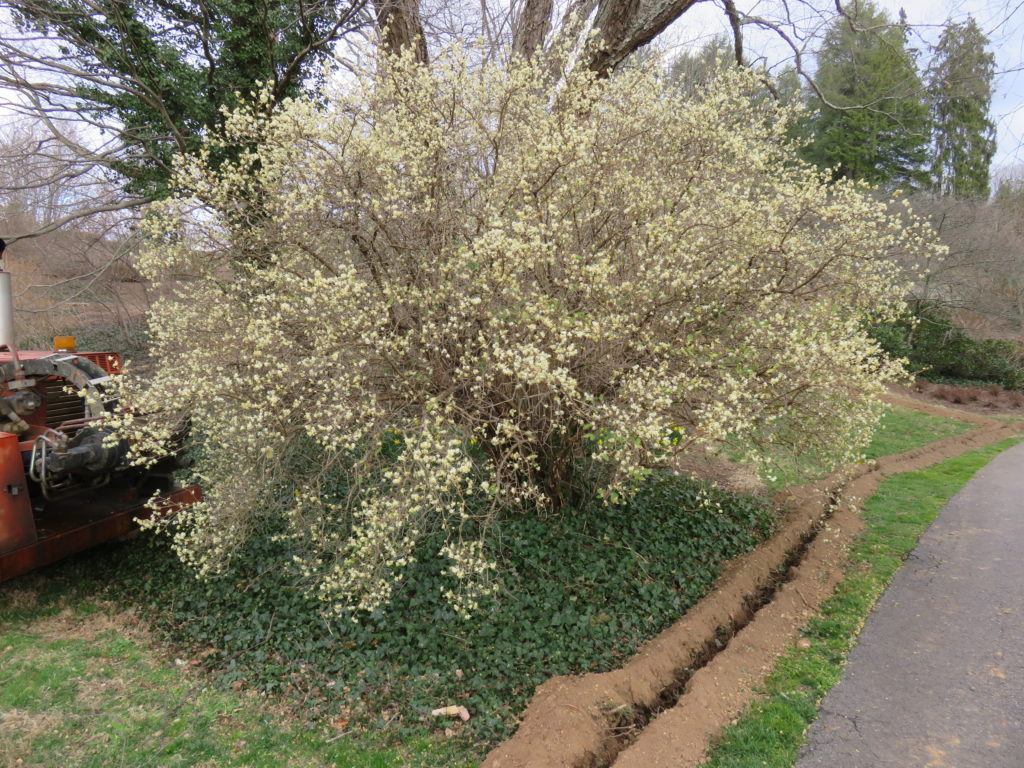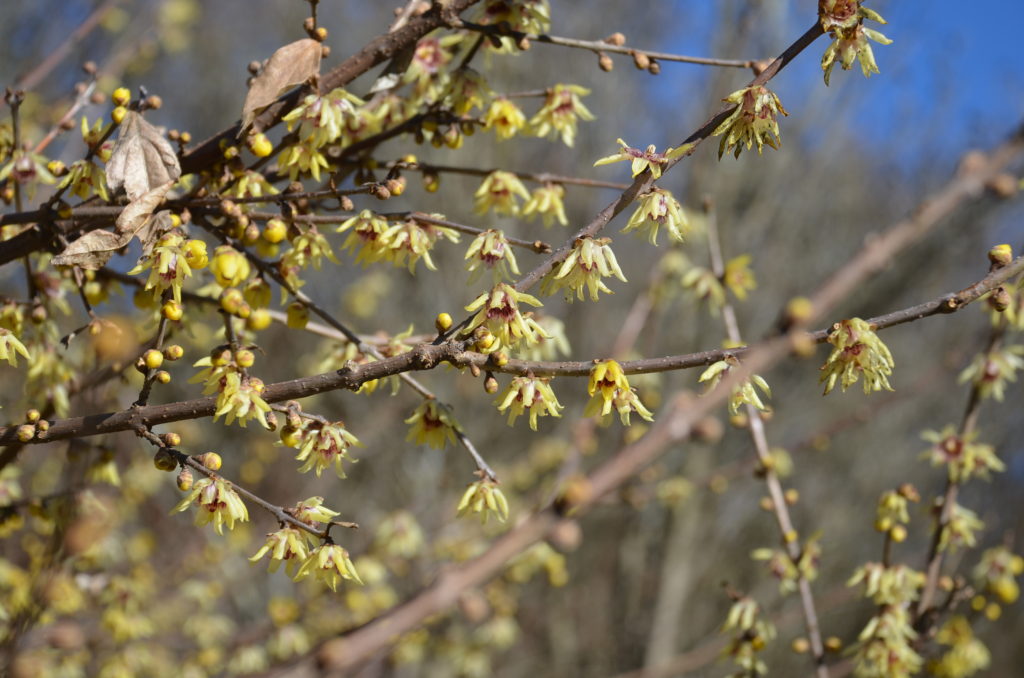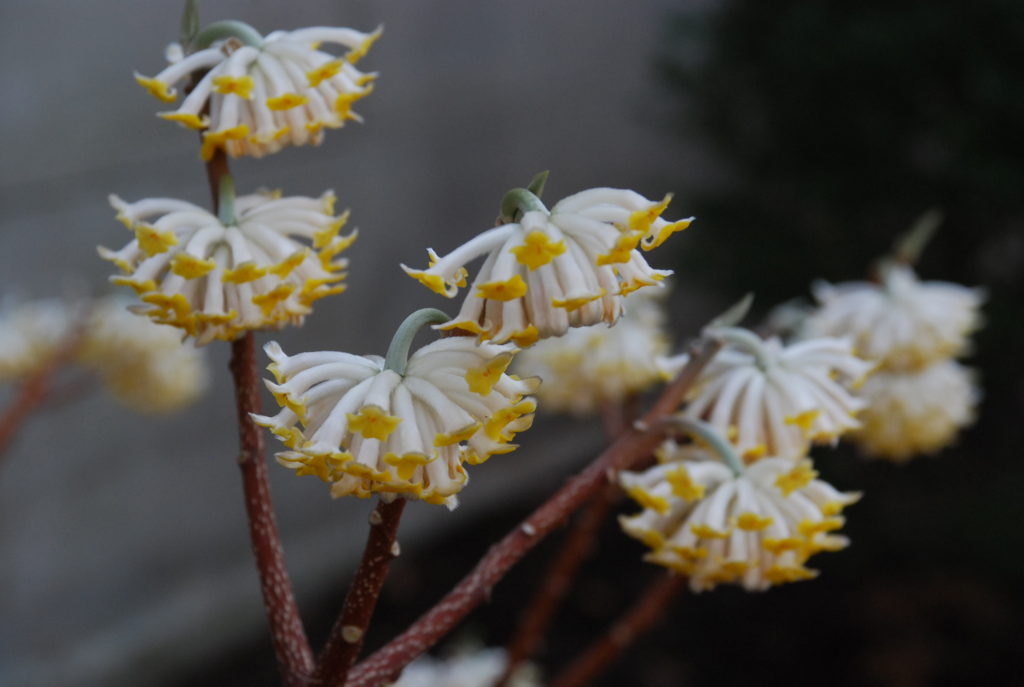If you live where winter temperatures are generally moderate in the low teens, a number of shrubs bloom in winter. In the Delmarva and mid-South regions (USDA hardiness zones 6-7), these seven plants bloom reliably for 2-3 weeks before spring officially arrives.

1. Winter honeysuckle (Lonicera fragrantissima), aka fragrant honeysuckle, are covered with small fragrant white flowers in midwinter on this vigorous 10-12-feet-high shrub. Note: winter honeysuckle is listed as invasive in some southern states because they are prolific seed producers. In the Tri-Cities area of Tennessee (Zones 6b-7a), flowers rarely produce viable seeds.
2. Wintersweet (Chimonanthus praecox) are covered with highly fragrant yellow/slight red blotched flowers in late January into February. This deciduous shrub grows 12 feet high by 10 feet wide and is moderately drought resistant.

3. Sweetbox (Sarcococca hookeriana ‘Humilis’) is a low-growing evergreen ground cover. During warm spells in February or March, small fragrant white flowers emerge from within the glossy boxwood-like evergreen foliage. It spreads slowly by underground runners where it prospers around woodland trees and dry sites.
4. Chinese paper bush (Edgeworthia chrysantha) is a deciduous suckering shrub that typically grows to 4-6 feet tall and wide. Clusters of tiny, apetalous, tubular, yellow flowers open in February. Blooms are also delightfully fragrant. Dark blue-green, lanceolate-oblong, 3-6-inches long deciduous leaves are an added plus in the spring-summer landscape. Irrigate every 7-10 days during prolonged dry spells.

5. Carolina Jessamine (Gelsemium sempervirens) produce sweet scented, golden yellow flowers February – March. This vine is trained to a trellis or vertical wall. It is often seen growing wild as a ground cover or pruned into 3-6 feet cascading mound. Many people wrongly call them forsythias which bloom in April.
6. Chinese Witchhazel (Hamamelis x intermedia) are hybrids of two Asian witchhazels (H. japonica x H. mollis). Shrubs grow 6-12 feet tall and wide and sucker freely at the base. Some of the better cultivars include ‘Diane’, ‘Gingerbread’, ‘Jelena’, ‘Orange Beauty’, ‘Primavera’, and ‘Westerstede’.
7a. Cornelian Cherry Dogwood (Cornus mas), native to central and southern Europe and western Asia, is a multi-stemmed, low-branched dogwood tree or shrub. Tiny, golden yellow flowers cover the branches during most of March despite some cold wintery nights. ‘Golden Glory’ and ‘Spring Glow’ are popular cultivars.
7b. Japanese cornel (C. officinalis) is filled with golden yellow flowers in very early March along with an attractive exfoliating winter bark. Both species grow 20-25 feet tall and slightly less in width. Leading varieties: ‘Kintoki’ (smaller 15 x15 feet specimen and heavy bloomer) and ‘Sunsphere’ (heavy blooming).
Rarely will you find these flowering shrubs for sale at local garden centers. It is best to buy these shrubs in late winter a number of fine on-line nurseries that do list them for spring planting. Plan on a 1-2 year waiting period before shrubs bloom for the first time.
These shrubs are also valued by early pollinating bees and butterflies. Birds attracted to red fruits in September. All shrubs are also moderately deer resistant.

 Posted in
Posted in 
